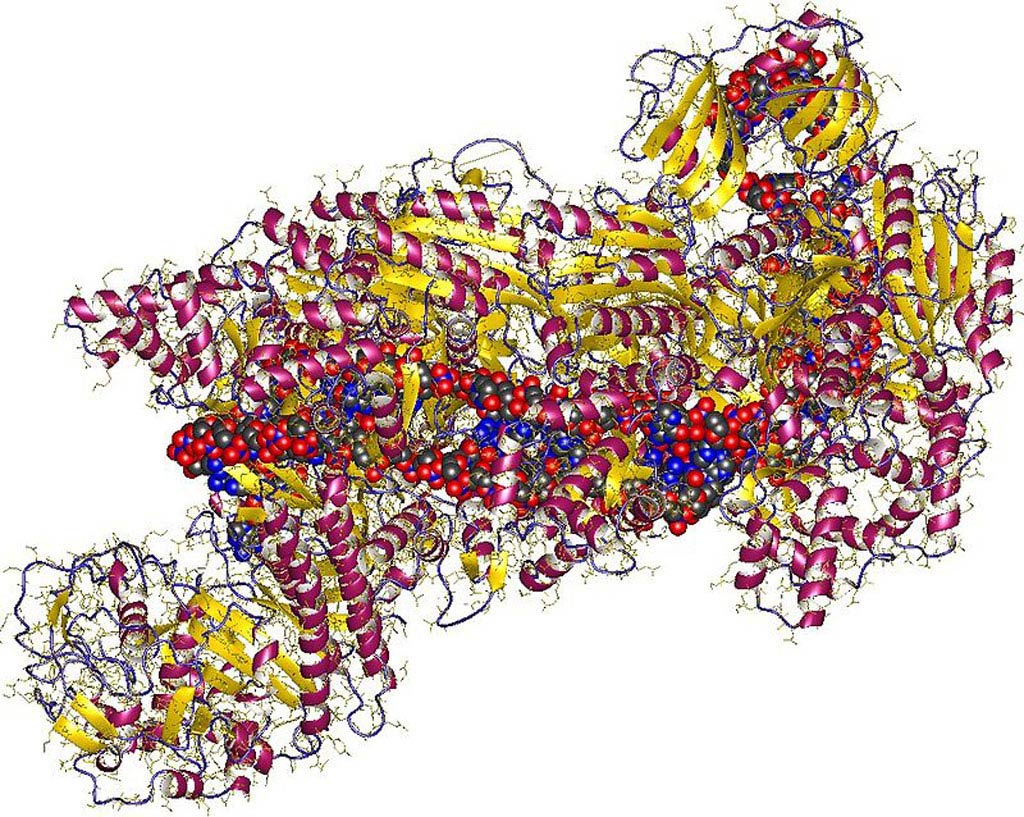Anti-CRISPR Proteins Increase Safety and Accuracy of Gene Editing
By LabMedica International staff writers
Posted on 21 Dec 2016
A set of naturally occurring proteins has been identified that specifically inhibits the action of the CRISP/Cas9 molecular genome-editing complex and thereby greatly increases its accuracy as a tool for manipulating gene expression.Posted on 21 Dec 2016
CRISPRs (clustered regularly interspaced short palindromic repeats) are segments of prokaryotic DNA containing short repetitions of base sequences. Each repetition is followed by short segments of "spacer DNA" from previous exposures to a bacterial virus or plasmid. CRISPRs are found in approximately 40% of sequenced bacteria genomes and 90% of sequenced archaea. CRISPRs are often associated with cas genes that code for proteins related to CRISPRs. Since 2013, the CRISPR/Cas system has been used in research for gene editing (adding, disrupting, or changing the sequence of specific genes) and gene regulation. By delivering the Cas9 enzyme and appropriate guide RNAs (sgRNAs) into a cell, the organism's genome can be cut at any desired location.

Image: A molecule model of a CRISPR (clustered regularly interspaced short palindromic repeats) and a DNA fragment from E. coli (Photo courtesy of Wikimedia Commons).
The conventional CRISPR/Cas9 system is composed of two parts: the Cas9 enzyme, which cleaves the DNA molecule and specific RNA guides that shepherd the Cas9 protein to the target gene on a DNA strand. Despite its attractiveness as a gene-editing tool, the technique can inadvertently make excessive or unwanted changes in the genome and create off-target mutations, limiting safety and efficacy in therapeutic applications.
Investigators at the University of Massachusetts Medical School (Worcester, USA) and colleagues at the University of Toronto (Canada) had earlier discovered small proteins encoded by bacteriophages that inhibited the CRISPR-Cas systems of their host bacteria. These "anti-CRISPRs" were specific to type I CRISPR-Cas systems that did not employ the Cas9 protein.
In the current study, the investigators reported that continued research on anti-CRISPRs had led to the identification of three distinct families of anti-CRISPRs that specifically inhibited the CRISPR-Cas9 system of Neisseria meningitidis. They reported in the December 8, 2016, online edition of the journal Cell that these proteins bound directly to N. meningitidis Cas9 (NmeCas9) and could be used as potent inhibitors of genome editing by this system in human cells.
"CRISPR/Cas9 is a good thing because it introduces specific chromosome breaks that can be exploited to create genome edits, but because chromosome breakage can be hazardous, it is possible to have too much of a good thing, or to have it go on for too long," said contributing author Dr. Erik J. Sontheimer, professor in the RNA therapeutics institute at the University of Massachusetts Medical School. "There is a current shortage of reliable ways to turn off Cas9 once it has already been delivered to a cell. If you can trip an off-switch after the correct editing is done, then the problem is relieved. We report the first known natural inhibitors of Cas9 activity. The new paper not only identifies that "off-switch," but it shows that Cas9 inhibitors exist naturally and can be identified and exploited."
"CRISPR is very powerful, but we have to be able to turn it off," said senior author Dr. Alan Davidson, professor of molecular genetics at the University of Toronto. "This is a very fundamental addition to the toolbox, which should give researchers more confidence to use gene editing."
Related Links:
University of Massachusetts Medical School
University of Toronto







 Analyzer.jpg)






